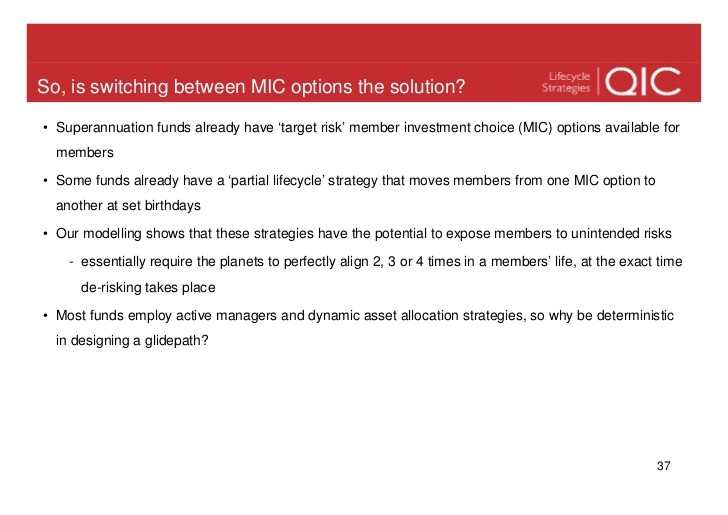Super funds target alternative assets
Post on: 8 Апрель, 2015 No Comment

shares
Superannuation funds have reduced their exposure to traditional asset classes, including shares and bonds, while increasing their exposure to alternative assets over the past five years in a bid to diversify their portfolios.
Chant West data revealed average strategic asset allocations of superannuation growth funds for Australian shares dropped to 29.2 per cent in March 2012 from 32.1 per cent in June 2007.
Target exposure to international shares dropped to 25 per cent from 26.9 per cent, strategic allocations to bonds dropped to 15.4 per cent from 19.6 per cent, and cash allocations rose to 5.7 per cent from 3.9 per cent.
At the same time, average target allocations to alternative assets almost doubled to 15.2 per cent from 8.2 per cent, based on Chant West’s survey of about 50 super funds, including industry funds, master trusts, public sector funds and corporate funds.
Chant West investment research manager Mano Mohankumar said the changing allocations had been driven by funds seeking alternative sources of returns.
Gradually, funds have been diversifying their portfolios further, with the increase in exposure to alternative assets being funded from reduced shares and bond holdings, Mohankumar said.
Frontier Advisors director of consulting Fiona Trafford-Walker said the trend had accelerated since the global financial crisis.
Asset allocations for growth funds have been changing over the years as trustees have sought greater diversification and a lower reliance on equities as the engine of the portfolio, largely due to their relative volatility, Trafford-Walker said.
Many of these [alternative asset investments] are being funded from equities in the case of the riskier opportunities, but others are being funded from bonds, particularly fixed-rate debt.

Industry funds have increased their target exposures to alternative assets the most, up to 20 per cent from 13 per cent in June 2007.
Master trusts or retail funds have boosted their target allocation to 12.1 per cent from just 4 per cent in June 2007, though the composition of their investments has differed from industry funds.
Retail funds are generally more exposed to liquid alternative assets such as listed infrastructure, commodities and more liquid hedge fund strategies, unlike industry funds, which, as a result of having more stable memberships and stronger cash flows, are able to invest a greater amount in less liquid assets such as unlisted infrastructure and private equity, Mohankumar said.
Given the rise in alternative asset allocations, industry funds cut bond exposures to 10.7 per cent by March 2012, down from 16.6 per cent in June 2007. Retail funds have reduced their strategic exposure to 18.3 per cent from 21.1 per cent in June 2007.
Many of our clients [including industry and government funds] have had greater allocations than many of their peers to infrastructure in particular and property over many years, and these have proven to be very good investments as well as demonstrating greater stability in return compared with equities, Trafford-Walker said.














